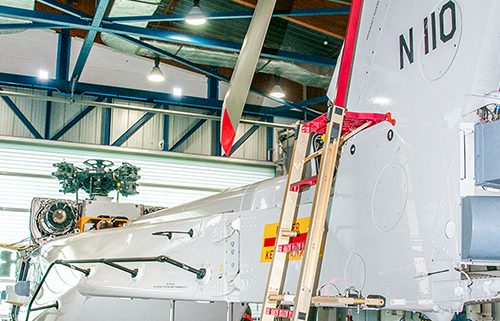The Defence Helicopter Command has completed its first flight with a 3D-printed aircraft part on 24 January 2017. The part is a ‘ladder bracket’ fitted to an NH-90 helicopter tail plane to which a ladder can be affixed for inspection and maintenance purposes. The 3D-printed ladder bracket is 40% lighter but stronger and more durable than the original design. 3D printing enables the Royal Netherlands Air Force to have parts produced faster, reduce maintenance costs, and at the end improve the deployability of her weapon systems. The Royal Netherlands Air Force commissioned the development of the ladder bracket. The project was a collaborative venture, with Fokker Aerostructures responsible for engineering, NLR-Netherlands Aerospace Center for 3D printing and testing, BPO-Delft for redesign and the Defence Materiel Organisation for certification.
The Royal Netherlands Air Force makes a distinction between three categories of parts for her aircraft. The ladder bracket falls into the least-loaded category and is not a critical part in terms of airworthiness. Developing this bracket allowed the partners to gain experience and knowledge of all modification phases of 3D printed parts, namely design, printing and assembly. This knowledge can also be applied to additionally develop more critical high-load parts.
NLR used its additive manufacturing capabilities to develop the ladder bracket. NLR’s Metal Additive Manufacturing Technology Centre (MAMTeC) is working to optimise 3D printing techniques for metal parts. The centre has a powder bed machine plus testing and modelling capabilities, making it the premier research centre in the Netherlands for the 3D printing of metals.
Contains English subtitles



